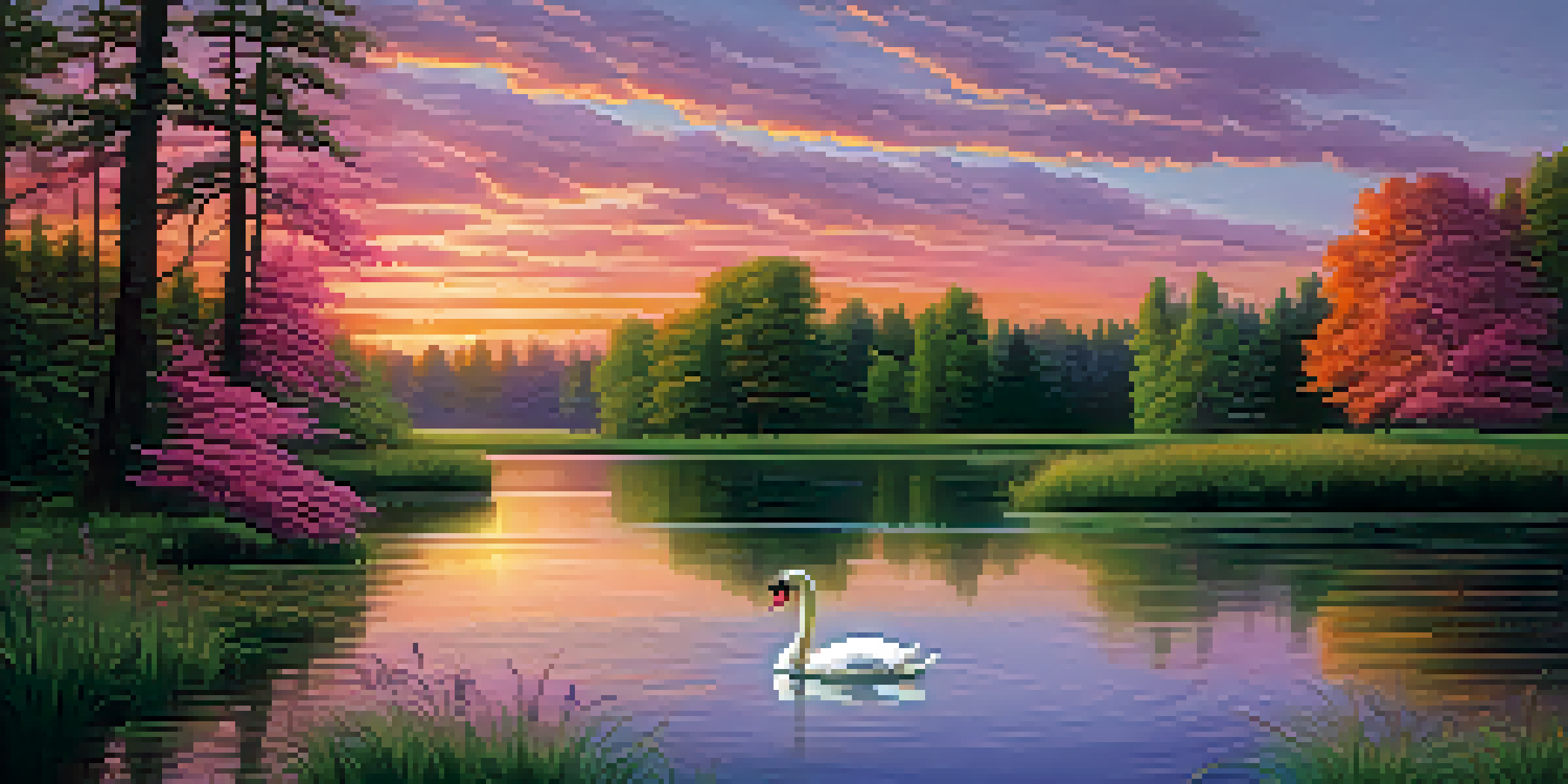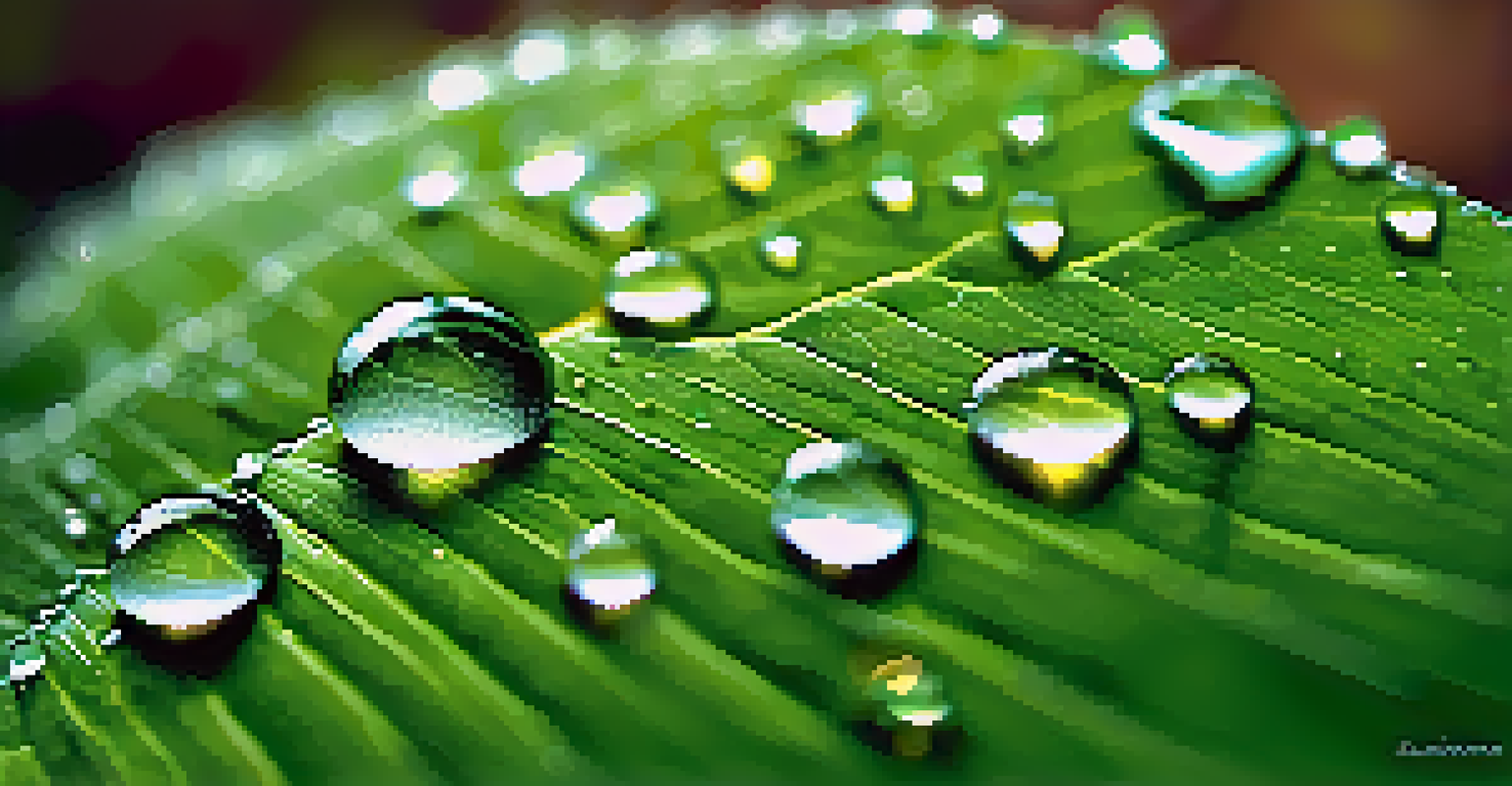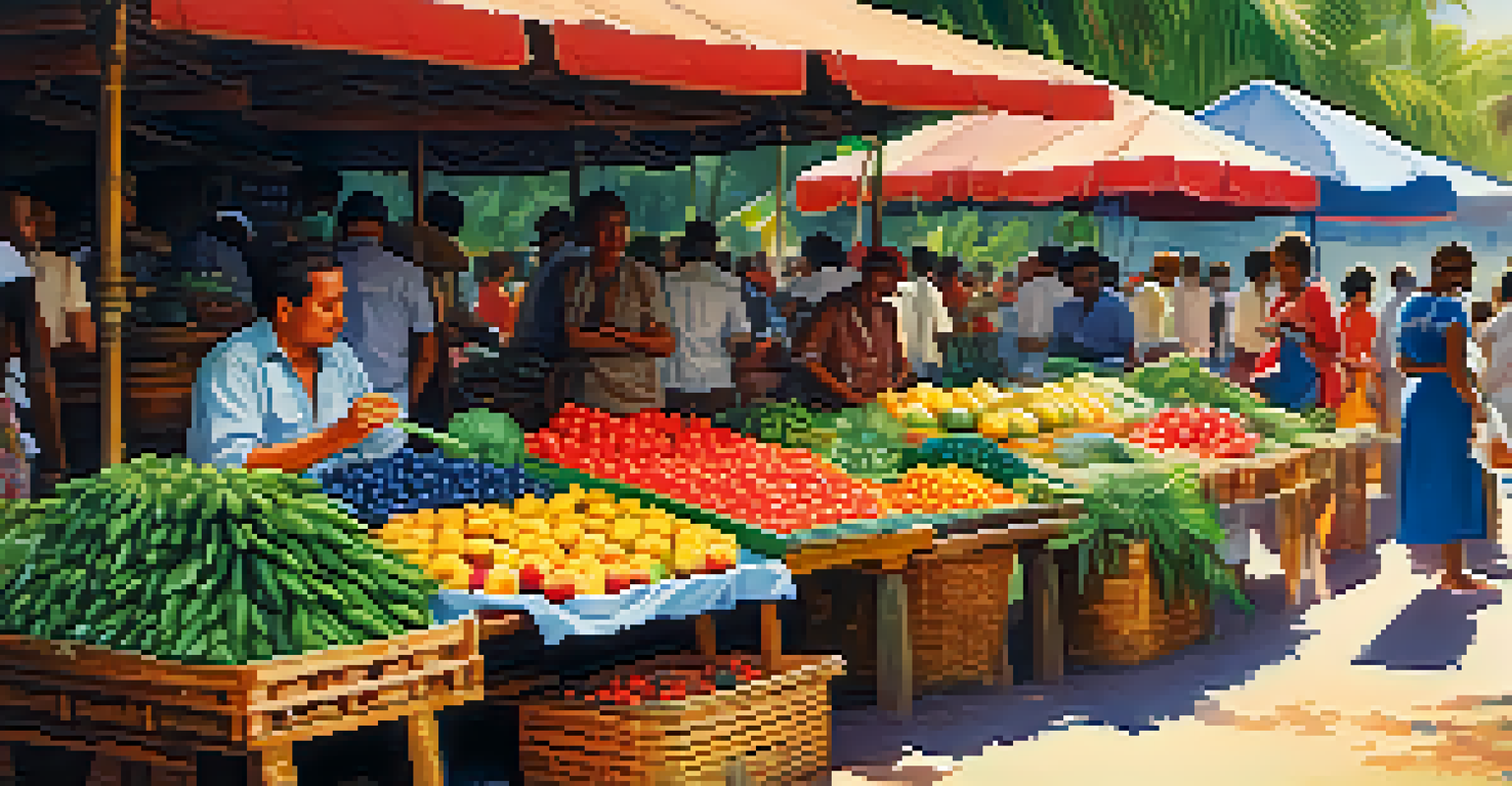The Role of Nature in Cultural Painting Practices

Nature as Inspiration for Cultural Expression
Throughout history, nature has served as a profound source of inspiration for artists across cultures. From the vibrant colors of sunsets to the intricate patterns of leaves, these elements have found their way onto canvases worldwide. Artists often translate the beauty of their surroundings into visual narratives that reflect their cultural identities.
Art is the most beautiful of all lies; it is the only way to give life to nature's beauty.
For example, the Impressionists of the 19th century captured fleeting moments of nature, emphasizing light and color in a way that invited viewers to experience the world as they did. Similarly, Aboriginal Australian art incorporates natural elements, using earth pigments to create pieces that tell stories of the land. This connection between nature and artistic expression highlights how deeply intertwined our surroundings are with cultural identity.
Ultimately, nature serves not just as a backdrop but as a character in the stories that artists wish to convey. By drawing on their natural environments, artists can communicate emotions and themes that resonate with their communities and beyond.
The Use of Natural Materials in Painting
The choice of materials in painting often reflects a deep appreciation for the natural world. Many cultures have traditionally used natural pigments derived from plants, minerals, and even insects to create their artworks. This practice not only emphasizes the beauty of nature but also fosters a sustainable approach to art-making.

For instance, ancient Egyptian artists used ochre and lapis lazuli to create vibrant murals that adorned tombs and temples. In contrast, Native American artists often use natural dyes sourced from berries and roots, ensuring that their art remains closely connected to the land. This use of natural materials serves as a reminder of the resources provided by the environment and encourages a respectful relationship with nature.
Nature Inspires Cultural Expression
Throughout history, artists have drawn from their natural surroundings to create works that reflect their cultural identities.
As modern artists explore eco-friendly practices, there's a renewed interest in these traditional methods. By embracing natural materials, artists are not only honoring cultural heritage but also advocating for environmental sustainability in the art world.
Cultural Symbolism in Nature-Inspired Art
Nature often carries significant symbolic meanings within cultural contexts, influencing how artists interpret elements of their environment. For many indigenous cultures, specific plants and animals are viewed as sacred, often appearing in their artwork as symbols of identity, spirituality, or history. This layering of symbolism adds depth and richness to the artistic narrative.
Nature always wears the colors of the spirit.
Take, for example, the lotus flower in Eastern cultures, which symbolizes purity and resilience. Artists often depict this flower in various forms, illustrating its importance in spiritual practices. Similarly, African art frequently incorporates animals, each representing different traits and stories that reflect the community's values and beliefs.
By embedding these symbols into their paintings, artists create a dialogue between nature and cultural identity. This interplay not only honors the natural world but also conveys messages that resonate with viewers on a personal and collective level.
Nature's Influence on Artistic Techniques
The environment in which artists work can significantly influence their techniques and styles. For instance, artists living in coastal regions may develop a fascination with the movement of water, incorporating fluid brushstrokes and a palette inspired by the sea. This connection to the landscape fosters a unique artistic voice that reflects the local environment.
Consider the Japanese art of sumi-e, or ink wash painting, which focuses on capturing the essence of nature through minimalistic strokes. This technique emphasizes the beauty of simplicity, allowing the artist to convey the spirit of their surroundings rather than just the physical representation. Such techniques reveal how deeply nature informs the methods and philosophies behind various art forms.
Natural Materials Enhance Art
Many cultures utilize natural pigments and materials, fostering a sustainable approach to art-making that honors the environment.
As artists continue to respond to their environments, the techniques they develop can evolve, leading to new movements that celebrate and reinterpret nature’s influence in innovative ways.
Regional Variations in Nature-Inspired Art
Different regions around the world showcase unique interpretations of nature in their artistic practices, creating a rich tapestry of cultural expression. For instance, Scandinavian artists often depict the stark beauty of their landscapes, utilizing cool colors and minimalist designs to evoke feelings of tranquility. This contrasts sharply with the vibrant and dynamic styles found in tropical regions, where lush foliage and bright colors dominate the canvas.
In the Andes, indigenous artists incorporate the majestic mountains and valleys into their work, using textiles and pottery to reflect the colors and textures of their environment. This regional diversity highlights how local flora and fauna profoundly shape artistic expression, making each cultural painting practice distinct and meaningful.
As we explore these regional variations, we gain a broader understanding of how artists interact with their environments, ultimately enriching the global art community.
The Role of Nature in Contemporary Art
In contemporary art, the relationship between nature and artistic expression continues to evolve. Many modern artists are responding to environmental issues, using their work to raise awareness about climate change, deforestation, and biodiversity loss. This shift towards eco-conscious art reflects a growing recognition of the urgent need to protect our natural world.
For example, artists like Agnes Meyer-Brandis use their work to explore themes of nature and science, often incorporating elements from the natural world into their installations. This not only highlights the beauty of nature but also encourages viewers to reflect on their relationship with the environment. Similarly, land art movements have emerged, where artists create large-scale works directly in nature, blending their creativity with the landscape.
Contemporary Art Addresses Nature
Modern artists are increasingly using their work to raise awareness about environmental issues, blending creativity with ecological advocacy.
By embracing these themes, contemporary artists are ensuring that the discourse surrounding nature remains vibrant and relevant, inspiring future generations to appreciate and protect the natural world.
The Future of Nature in Cultural Painting Practices
As we look to the future, the role of nature in cultural painting practices seems poised for further exploration and innovation. With the rise of digital art and technology, artists are finding new ways to represent their environments, merging traditional techniques with modern mediums. This fusion can lead to exciting new forms of expression that challenge our perceptions of art and nature.
Moreover, the increasing emphasis on sustainability in the art world is likely to inspire a resurgence of interest in natural materials and eco-friendly practices. Artists may begin to collaborate more with environmentalists, scientists, and local communities to create works that not only reflect their cultural heritage but also advocate for the planet's health.

Ultimately, the future of nature in cultural painting practices is bright, as artists continue to push boundaries and engage with their environments in meaningful ways. This ongoing dialogue between art and nature will undoubtedly enrich our cultural landscape for years to come.